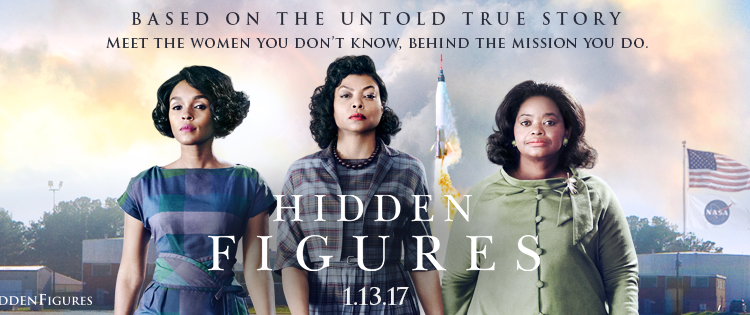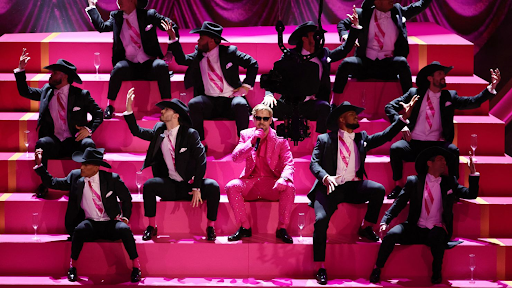Hidden Figures Movie Review
Hidden Figures is a movie many people are talking about, and has been mentioned as a possible Academy Award nominee for best picture. It’s the incredible true story of three African-American women who were instrumental during the 1960’s in helping America explore space, despite the extreme racism and segregation that existed during their time. The movie boasts fine performances from the three leads (Taraji P. Henson, Octavia Spencer, and Janelle Monáe) as well as beautiful cinematography and costumes. The story is compelling and thought-provoking, detailing “figures” that were largely “hidden” from American history. The ambitious film perhaps bites off more than it can chew, tackling the lives (and stories) of three characters, as well as introducing many concepts that few audience members are familiar with. In a little more than two hours, the movie attempts to explain human “computers,” the Space Race against the Russians, the physics behind orbiting the earth, and other important ideas. The audience may leave the theater asking more questions than answered in the movie. For example, the idea of why only women served as human computers is only briefly explored in the film.
Decades before laptops, smartphones, and the Internet, the three women profiled in Hidden Figures are referred to as “computers.” The engineers working at NASA (National Aeronautics and Space Administration) did not have machine computers, and needed mathematicians to do their calculations. During the 1960’s, women were largely excluded from being “professional” engineers, and were relegated to being “sub-professional” computers, earning less pay and little recognition. In fact, all NASA computers during the 1960’s were women, working in a separate building from their male counterparts. NASA actively recruited at universities, looking for the finest female mathematics and science students to work as computers.
Despite the obvious sexism that prevented women from the more prestigious and lucrative profession of an engineer, NASA computers enjoyed benefits not afforded to other women during the 1960’s. Although their pay was lower than that of engineers, it was still much higher than other jobs available to women during that time. In addition, NASA allowed married women with children to work full time, which was not allowed by many businesses and organizations. Most pertinent to the movie was that NASA hired African-American computers.
“West Area Computers” were African-American women working in a separate NASA building from the white computers. The computers lived and worked in Virginia, which was still segregated, with separate bathrooms. The three women featured in the film emerged from their “hidden” role, fighting prejudice with their incredible talents and perseverance, to accomplish great feats. Katherine Johnson (Taraji P. Henson) calculated the launch trajectories and return paths for early NASA missions, including astronaut John Glenn’s historic earth orbit in 1962. Dorothy Vaughan (Octavia Spencer) taught herself how to program machine computers, and became the first African American woman to serve as a supervisor at NASA. Mary Jackson (Janelle Monáe) became the first African-American female engineer at NASA, and rose to the most senior position. In addition, all three women had children, working full time, when most other mothers stayed at home. Their stories of fighting sexism and racism to accomplish their goals are truly inspirational.










